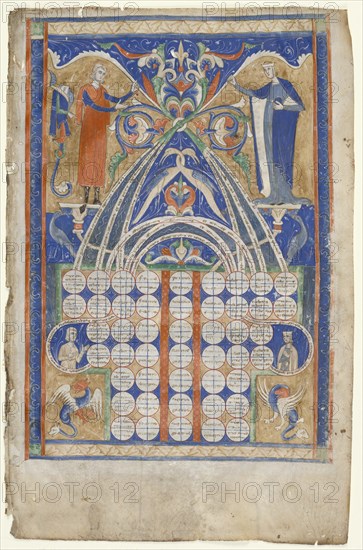
Sujet
Leaf from Gratian's Decretum: Table of Affinity, c. 1270-1300. Creator: Unknown.
Légende
Leaf from Gratian's Decretum: Table of Affinity, c. 1270-1300. These leaves were excised from a copy of the handbook of canon law known simply as the Decretum written by Gratian, an Italian Camaldolese monk, in Bologna around 1130-40. The Decretum was widely copied and consulted throughout the Middle Ages. These tables were used to determine relationships created by marriage. During the Middle Ages such relationships of "affinity" could be impediments to subsequent marriages if one partner were to die. In the direct line, for example, a man may not marry his mother-in-law or his daughter-in-law, while in the collateral line a man may not marry his uncle's wife or his wife's first cousin or niece. Like Tables of Consanguinity, Tables of Affinity were used by church officials to approve or deny marriages.
Crédit
Photo12/Heritage Images/Heritage Art
Notre référence
HRM19F91_107
Model release
NA
Property release
NA
Licence
Droits gérés
Format disponible
70,4Mo (6,9Mo) / 34,2cm x 51,7cm / 4035 x 6102 (300dpi)